In Finland, island hopping and recreating history are favorite pastimes
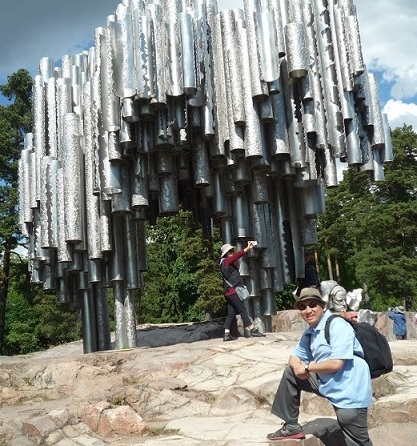
The author visiting Helsinki’s Sibelius Park, which is an attractive monument of 527 steel pipes melded together in honor of Finnish composer Jean Sibelius. His classical music of the late Romantic period is still played in many concert halls today.
By Wendell Gaa
Mention Finland to the average Filipino, and more likely than not the first thing that comes to mind is the mobile brand Nokia which is widely used in the Philippines.
As amusing an association to the country that surely is, Finland, which is probably the most overlooked of the Scandinavian European nations, has surprisingly so much more to offer in physical and cultural attraction. This summer, my parents and I were only too pleased to visit the Finnish capital Helsinki, and complementing our trip there was a happy reunion I had with my Turkish friend Basak along with her Finnish husband Sami, both of whom served as our city tour guides.
Our Scandinavian cruise tour boat docked at the Helsinki West Harbor where we were met by Sami and Basak, whom I had known since my memorable summertime spent in Debrecen, eastern Hungary, three years ago when I was there on a scholarship history course at the University of Debrecen. They led us to the city’s metro railway that would take us to our first major attraction of the day, the Helsinki Cathedral.
Riding the metro gave us a good introduction to city life, as we observed through the windows the seaside wharf ambience of Helsinki, which gives the Finnish capital an appealing atmosphere similar to that of San Francisco and Sydney, Australia. Albeit Helsinki is noticeably smaller in size and population, possessing that small-town charm wherein you could easily get to know almost everyone and have random encounters with people you know in most of the public places here. The summer heat outside was nicely moderated by the Helsinki shore breeze, and I could only imagine how insanely freezing it must be here during the winter given Finland’s proximity to the North Pole.
Although our friends told us it is also a wonderful experience to come here just to view the country’s pretty winter wonderland Christmas landscape, hence Finland’s famed reputation for being the home base of Santa Claus!
Additionally, on the metro we got to observe the demeanor of everyday Finns, whom like most northern Europeans, can be seemingly reserved and sullen on the outside, but peel the layers, and you will find quite an outgoing people who are willing to befriend you for life and to share some fascinating tales of their home nation.
We finally arrived at the Helsinki Cathedral, a prime place of worship for the city’s Evangelical Lutherans. We were pretty awed by its decorative neoclassical-inspired architecture and design. Many buildings I saw in Helsinki thus far were comparable to that of most progressive Western European cities, but to see this cathedral with its shining blue-colored dome and opulent white pillars is something unique even in Finland, which is probably the reason why this particular church is the city’s architectural icon that appears on the cover of many Helsinki tourist guide books.
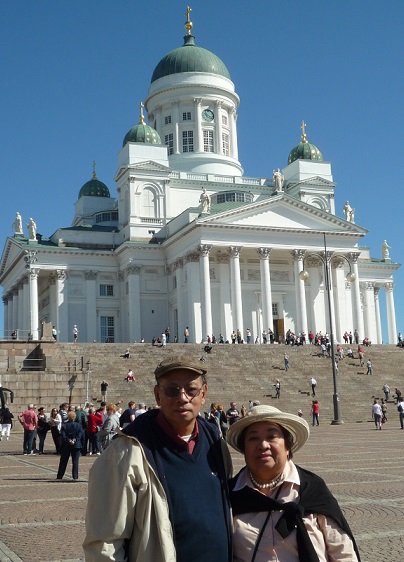
The author’s parents, former Consul General in New York Willy Gaa and wife Linda, before the Helsinki Cathedral, an Evangelical Lutheran cathedral, which is the national church of Finland.
Viewing the cathedral from outside was impressive enough, but going inside was a step back into history as we saw Christian-inspired statues and paintings. My curiosity of Finland’s past was further spurred by Sami’s explanation of the cathedral and its legacy to the nation. It was intriguing to learn that this cathedral was originally built from 1830 to 1852 as homage to Tsar Nicolas I of Russia, which at the time ruled over Finland. The cathedral was in fact called St. Nicholas’ Church until Finland gained independence from Russia in 1917 after the Soviet revolution.
We then embarked on a favorite Finnish pastime: island hopping. The archipelagic shorelines of Finland are dotted with so many islets that during the summer, it is just impossible not to be tempted to explore one of them, especially if you are a nature lover. On the other hand, if you are a history aficionado, these islands have plenty to offer too. Basak and Sami led us to one of Helsinki’s busy sea harbors, where we would take a small ferry to the historic Suomenlinna Sea Fortress island, a UNESCO World Heritage Site.
Walking around the harbor gave us yet another sample of Helsinki’s charming seaside town atmosphere as we strolled around the different shore vendors, one of whom sold a souvenir mug to my Dad for his traveling collection. While waiting for our ferry to leave, we were entertained by one of the other vendors who explained to us the history behind the Finnish cartoon character stuffed toys she was selling.
We decided to sit at the roofless top of the ferry to enjoy the sunshine and sea breeze as we took our 30-minute ride to Suomenlinna Sea Fortress. As Sami continued to entertain us throughout the ride with stories of famous Finnish song artists and filmmakers, as well as the country’s former president Tarja Halonen who is popularly known worldwide to resemble talk show host Conan O’Brian, we couldn’t help being amazed at the seagulls flying extremely close above our heads, something I’ve never seen before anywhere else.
The sea fortress was in active use by the military throughout the rest of the 18th century until the Finnish War resulted in the defeat of the country’s navy and army by Russian forces, and the fortress formally surrendered on May 3, 1808, hence began the Russian occupation of Finland the following year, which was to last for over a century. Today Suomenlinna is blessed with six museums and nine restaurants, and home to about 850 people all year round.
Walking inside the old chambers, armory, corridors and arches of the Suomenlinna garrisons gave us the feel of the 18th century Finnish life. We even got to observe history literally come to life by watching actors dressed in 1700s-era attire touring children through the island as part of their summer education field trip. Although I couldn’t understand what the actors were lecturing to the kids, I could sense that they were really immersing themselves into their roles as if they had literally time traveled from the past. It’s always meaningful to see people teach the next generation to appreciate history more in such a manner.
We soon took our ferry back to the city, and decided that our last major stop would be the Sibelius Park, a monument of 527 steel pipes put together in tribute to the celebrated Finnish composer Jean Sibelius. Opened in 1967, this monument beautifully illustrates the essence of Sibelius’s music through its wave-like shape projected by the hollow steel pipes welded together. A fine example of Finnish artistry, this was a most fitting way to cap off our wholesome exploration of charming Helsinki, and we were surely grateful to our friends for teaching us more about Finland.

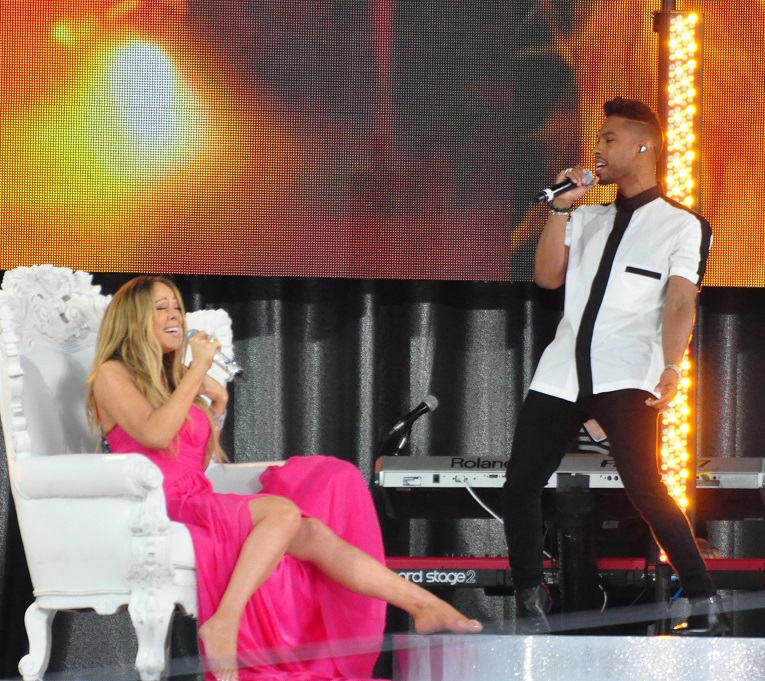
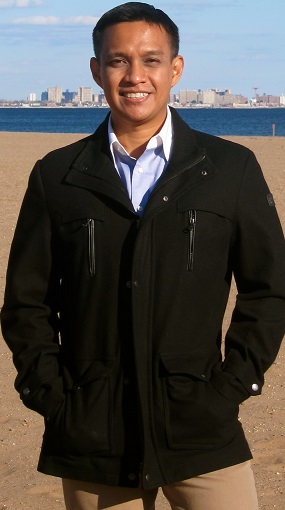

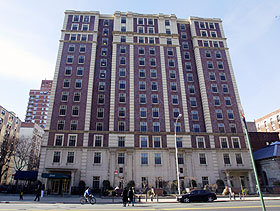


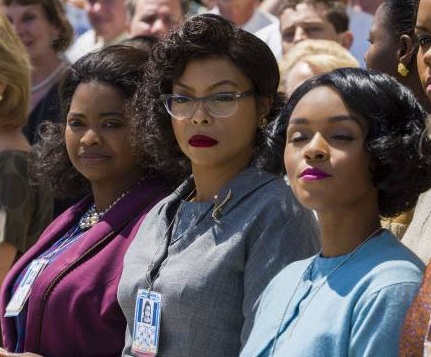

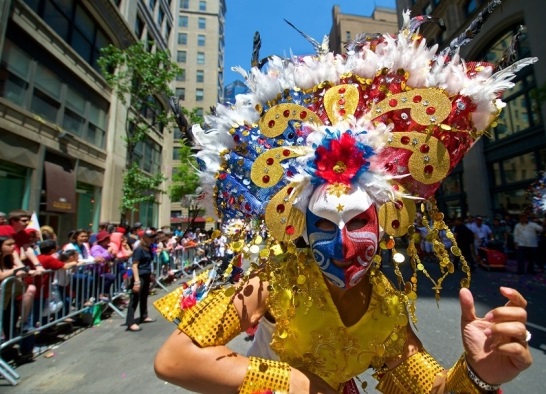
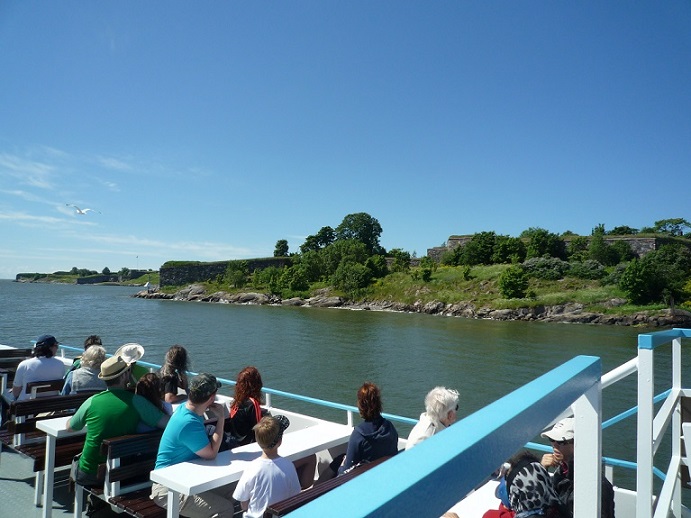



Greeting Wendell Gaa,
Thank you for including Finland among other beautiful and interesting Scandinavian destinations you have recently reported in The FilAm online magazine. By the way. do you have your own travel Web site or travel blog?
And how about writing a travel book or a travel column for online publications and newspapers?
Once again thank you for informing us about your travel to adventure reports. I do remain
M. Matthews, Sunnyside, NY USA